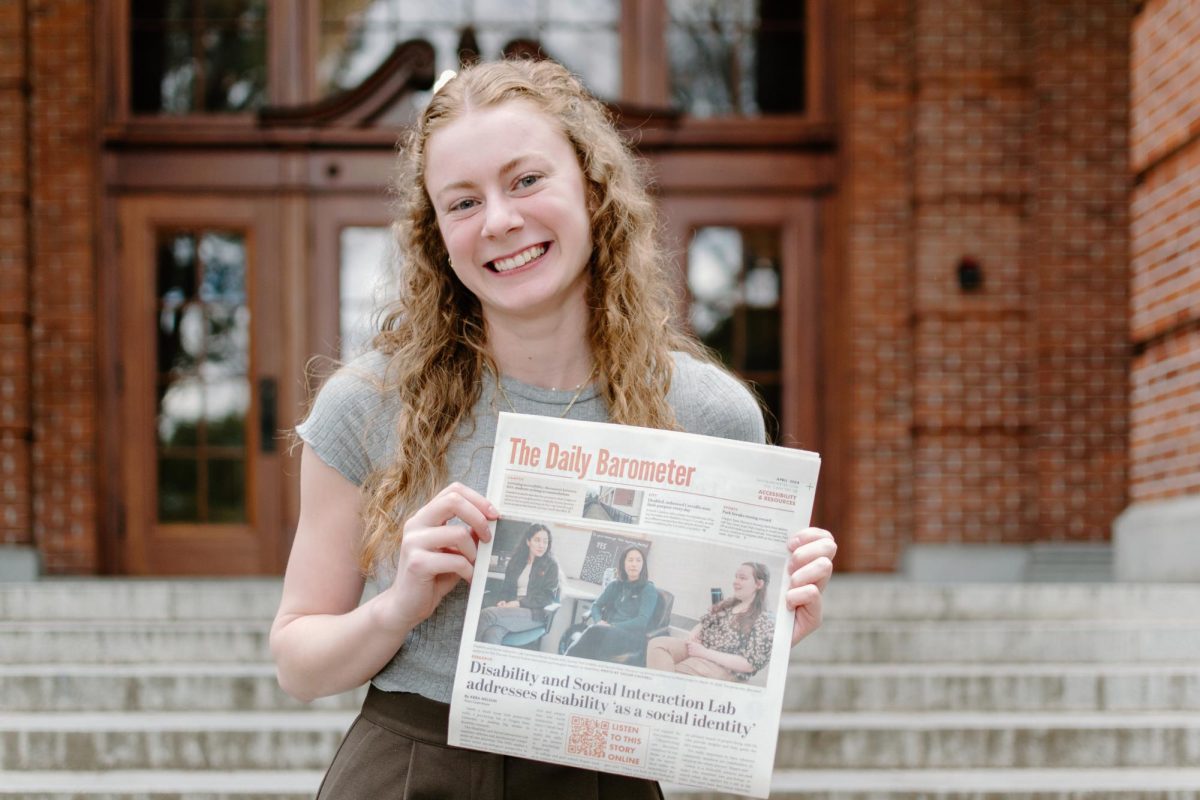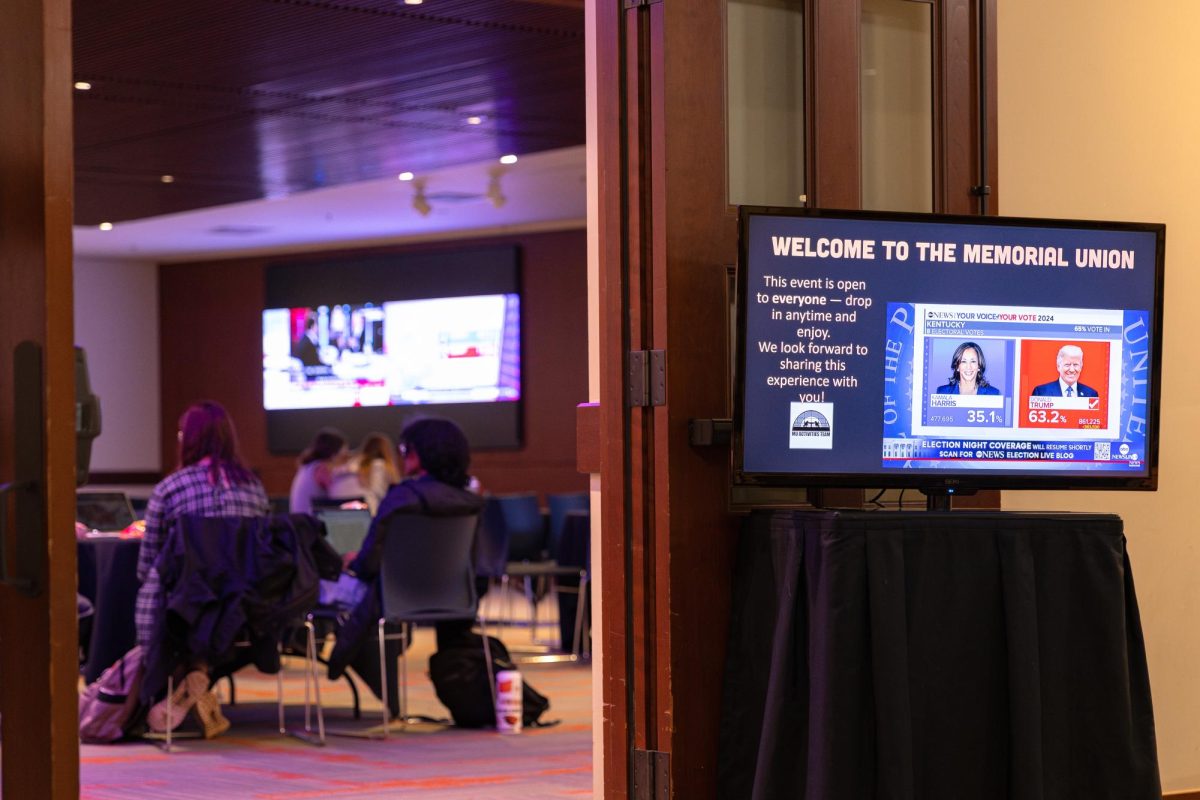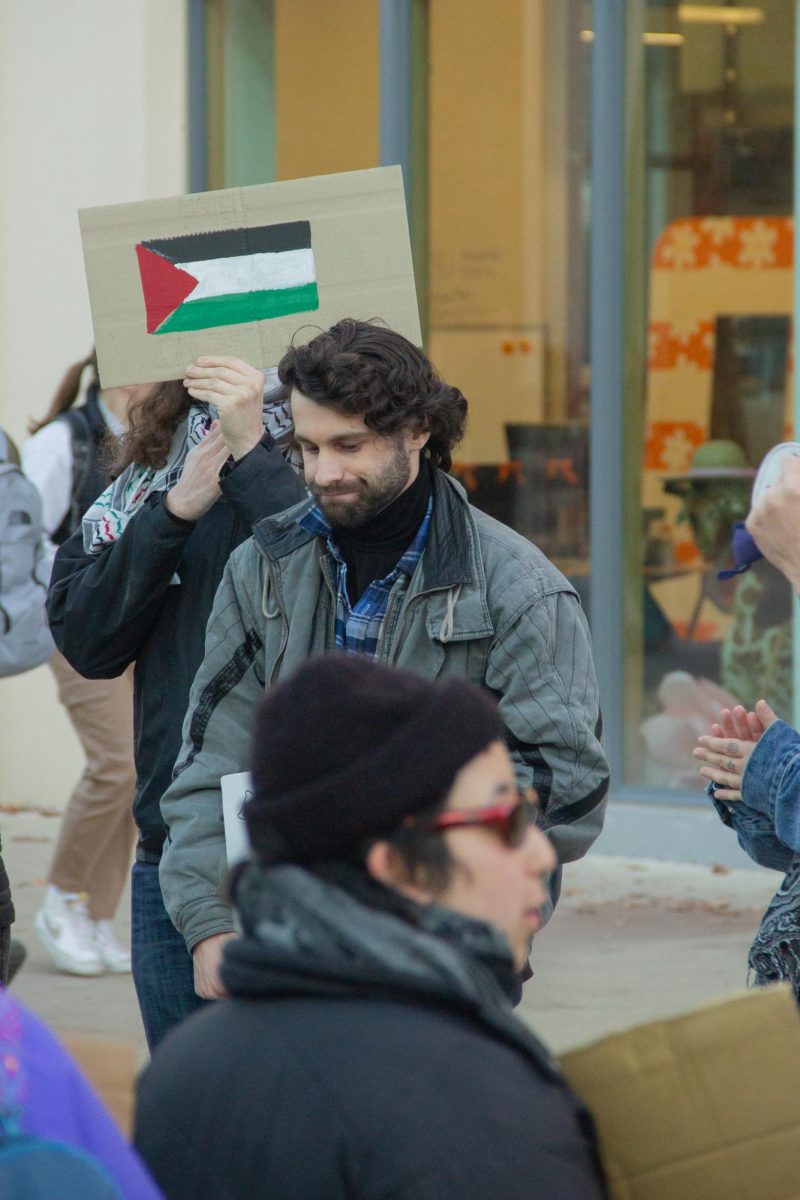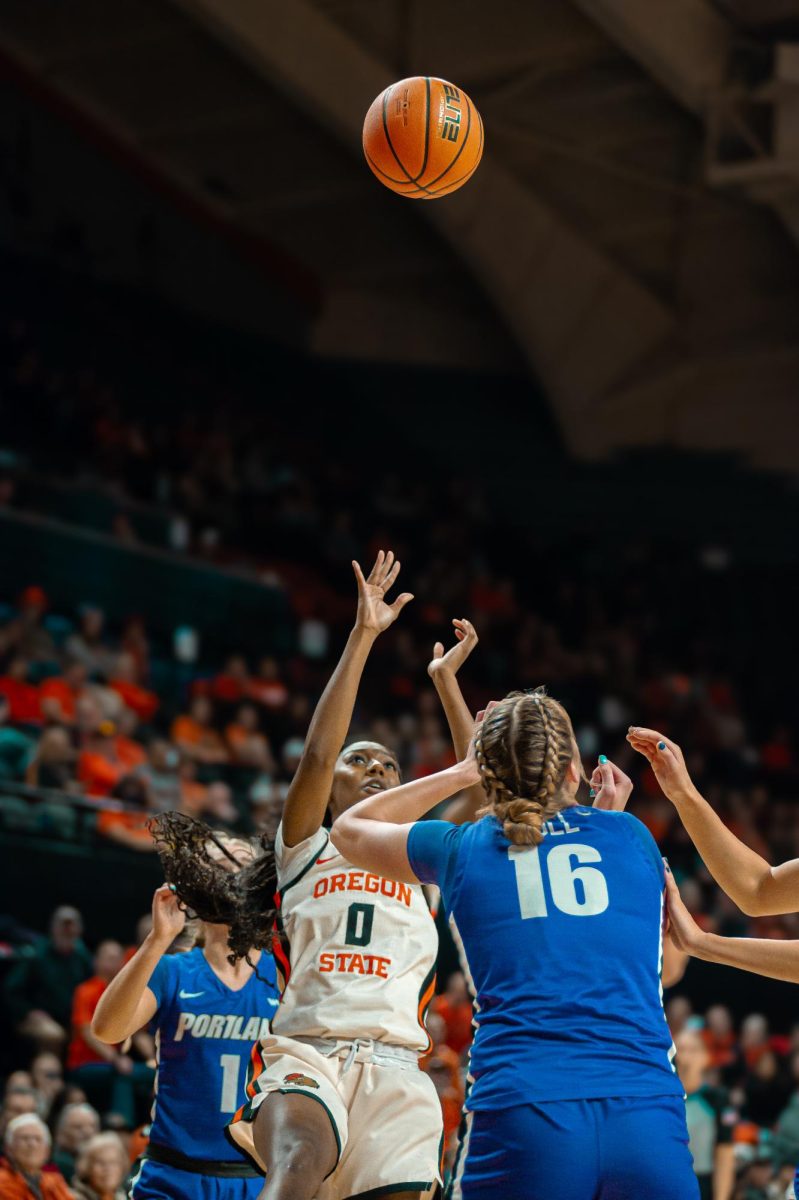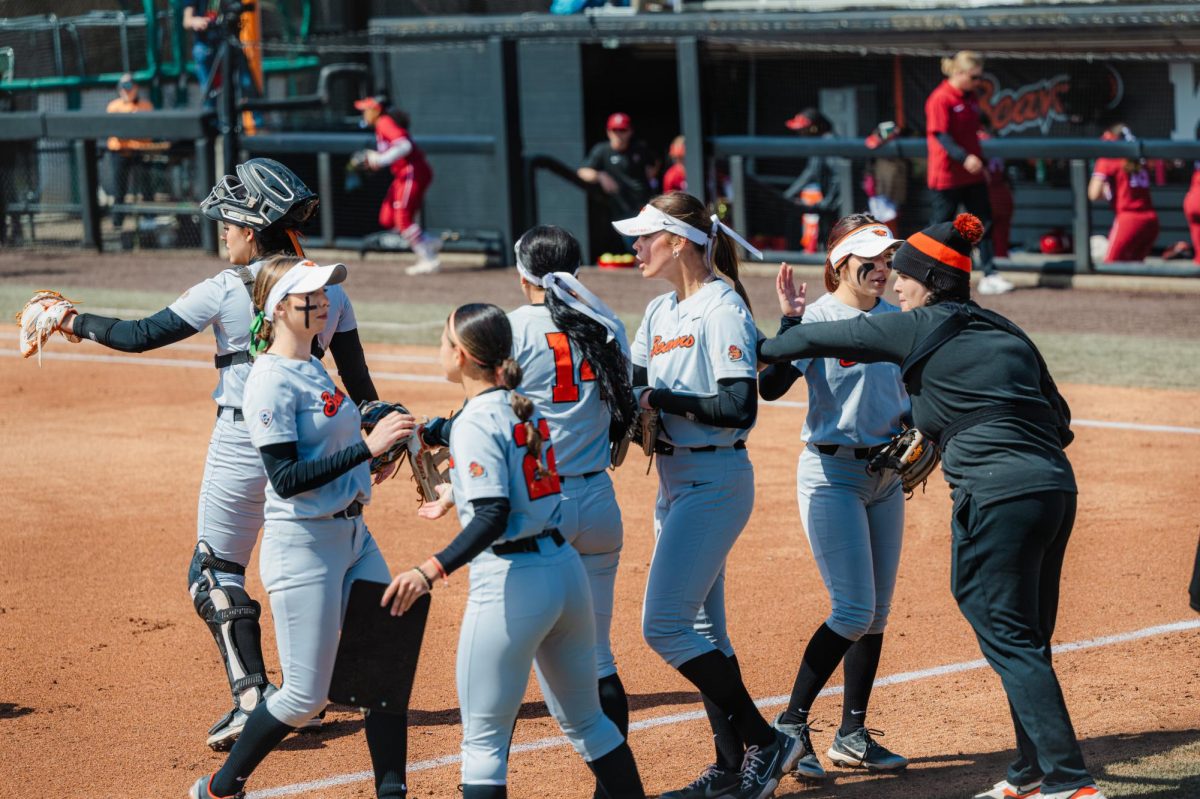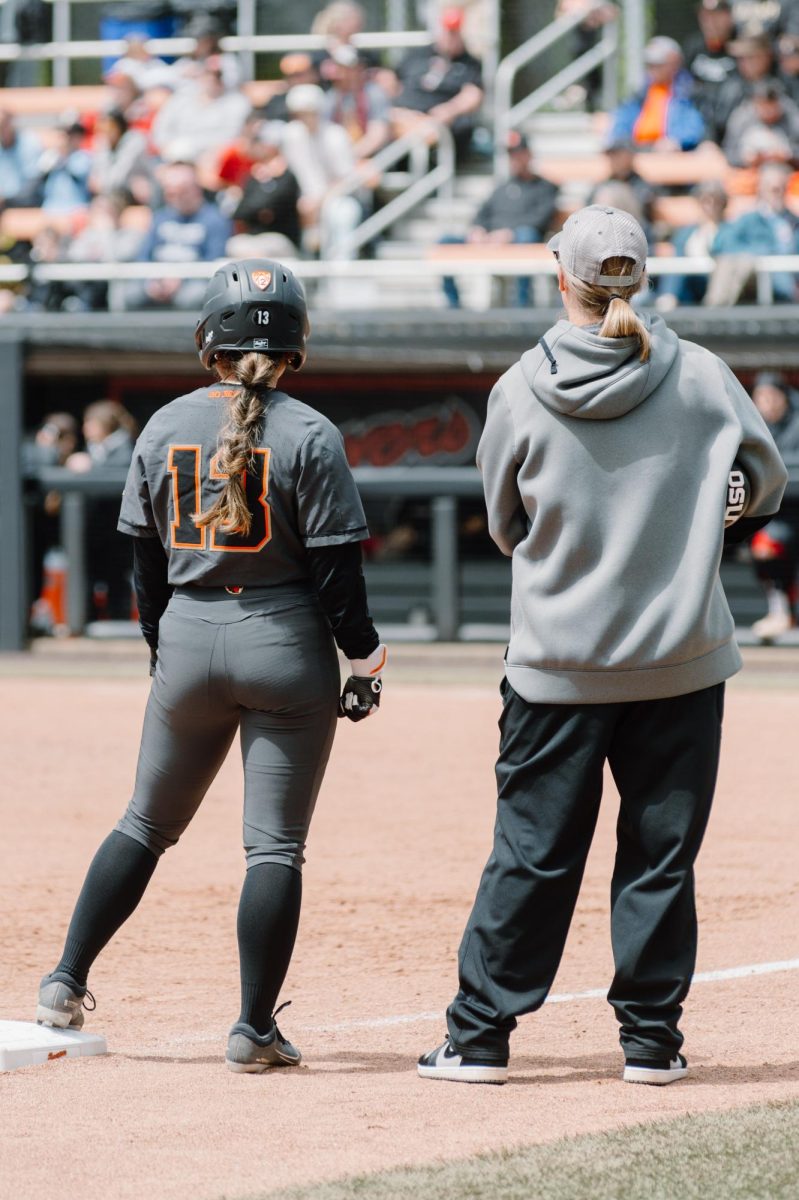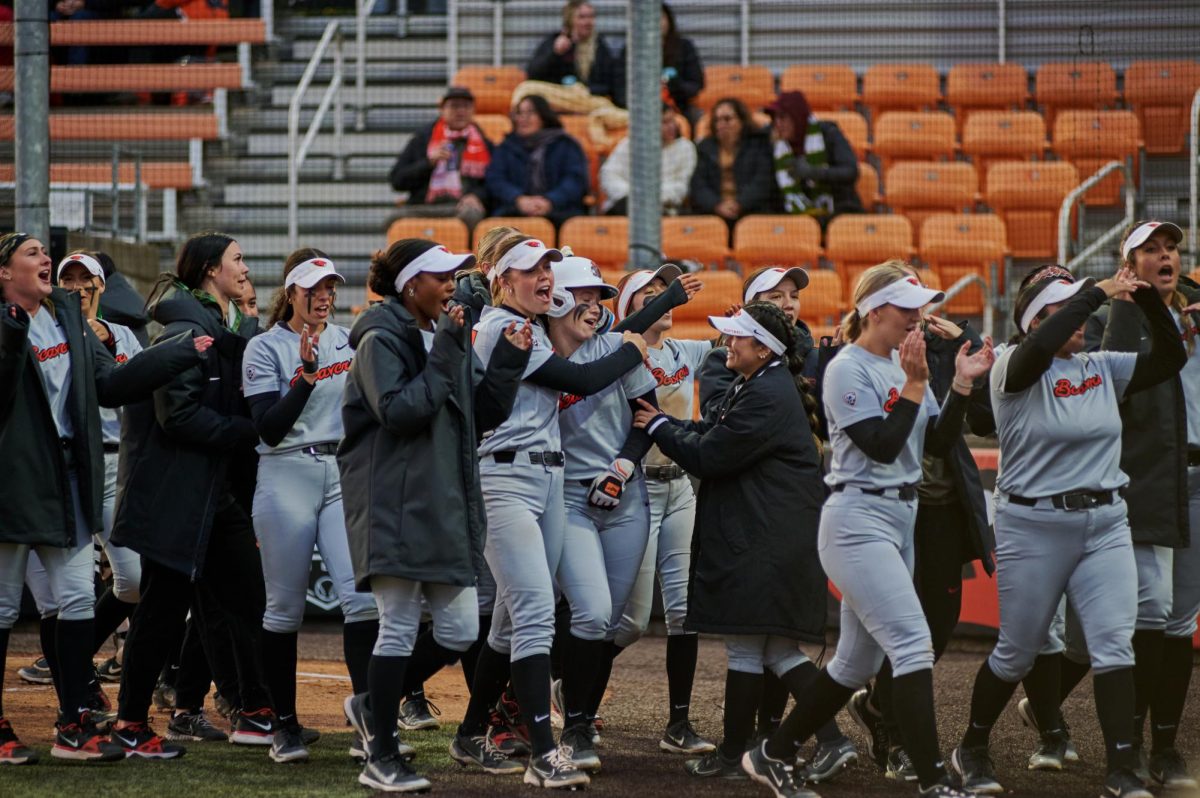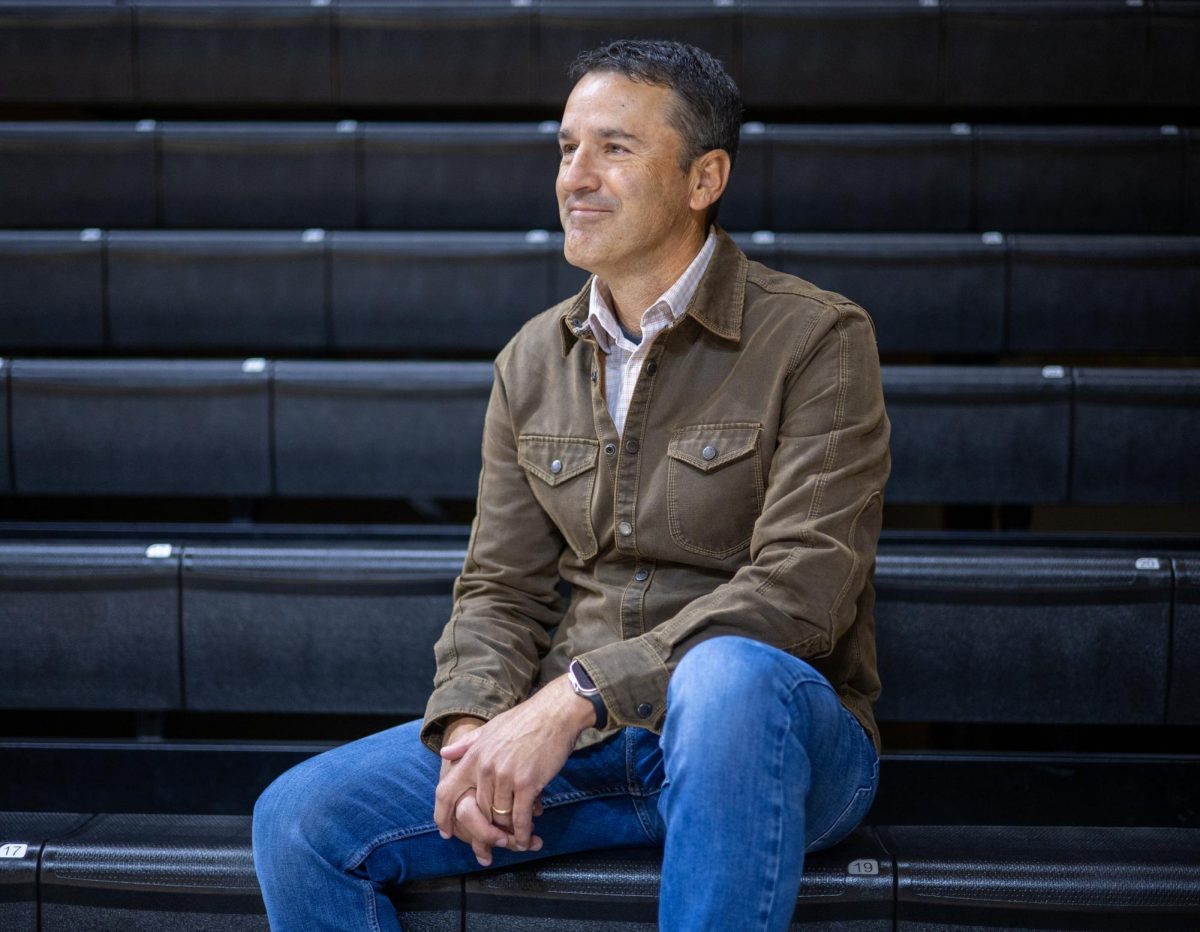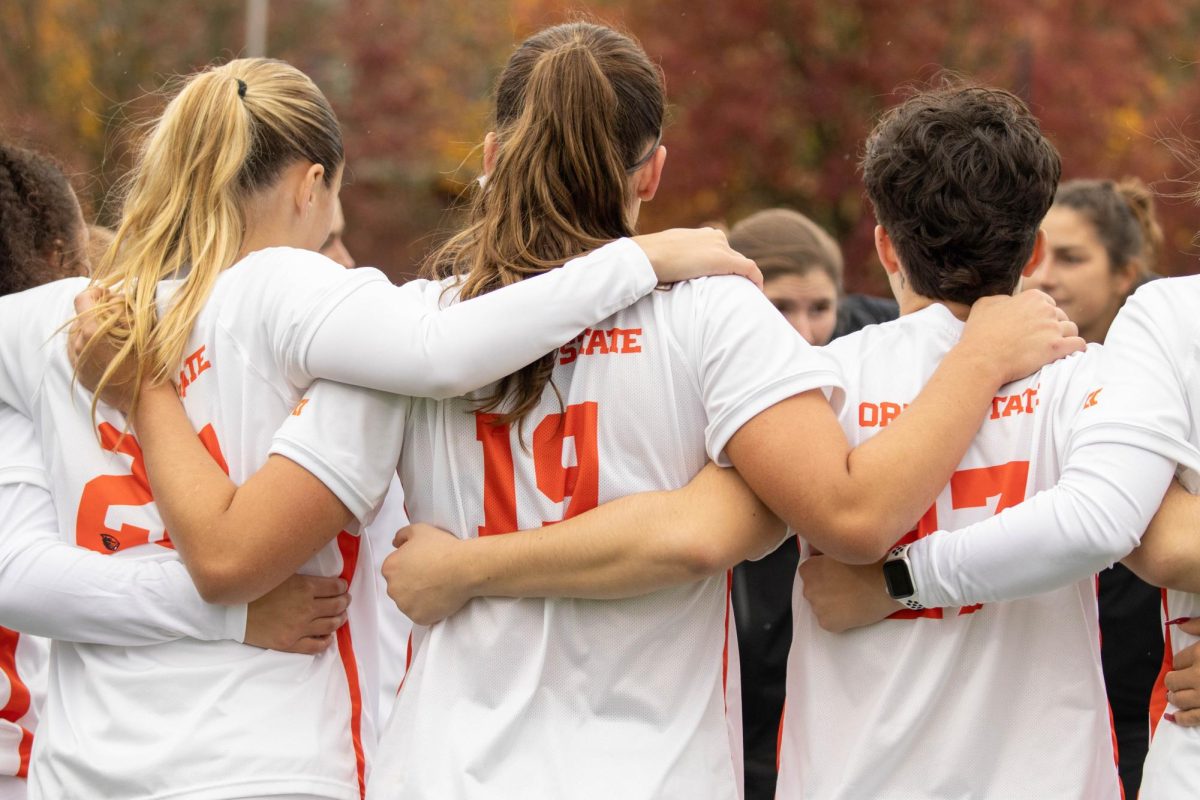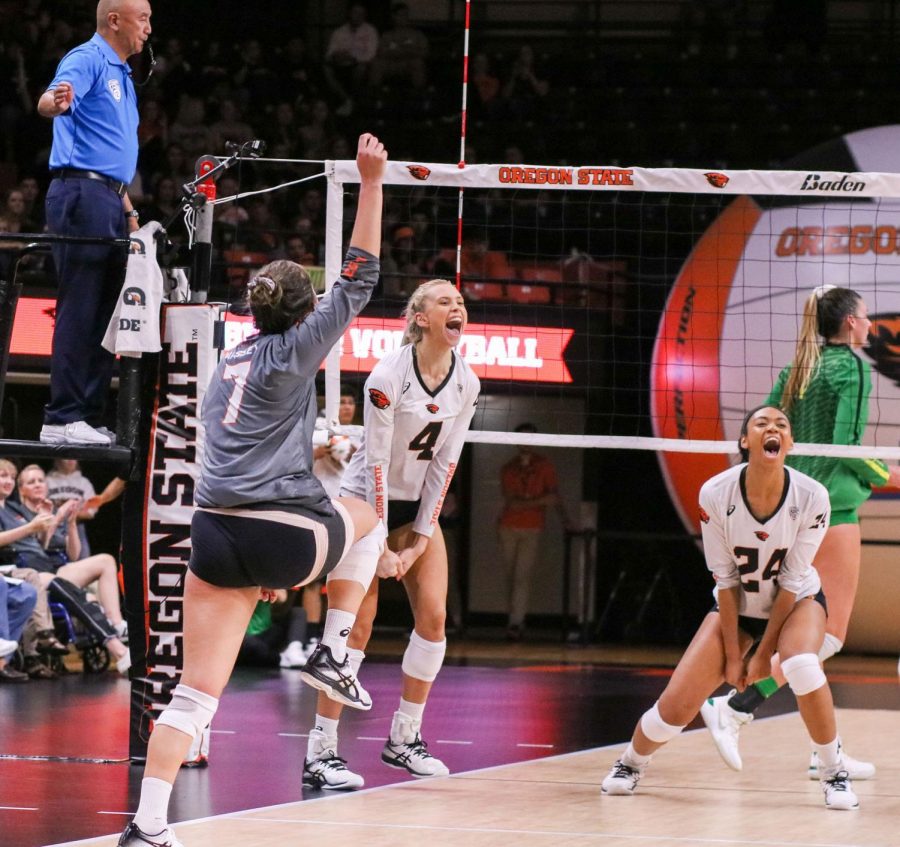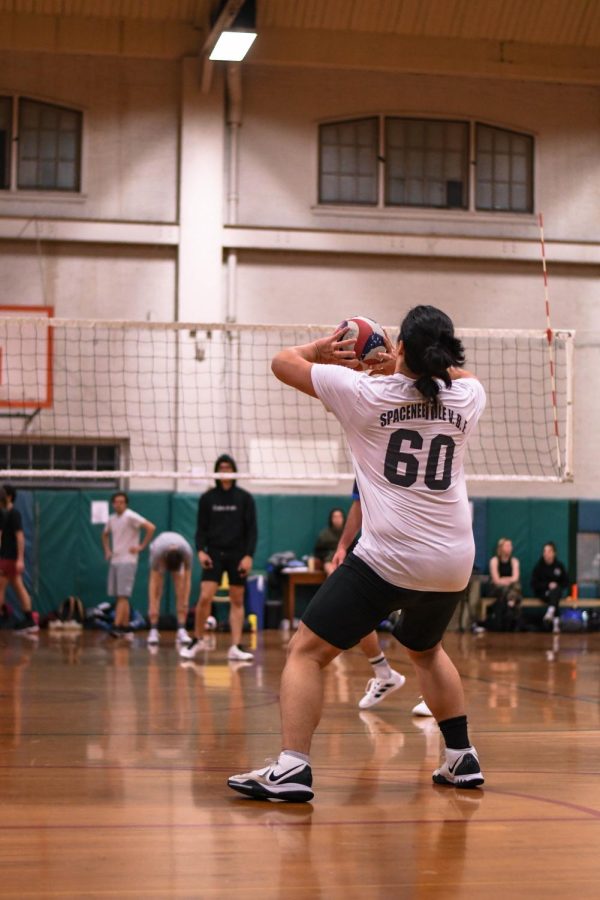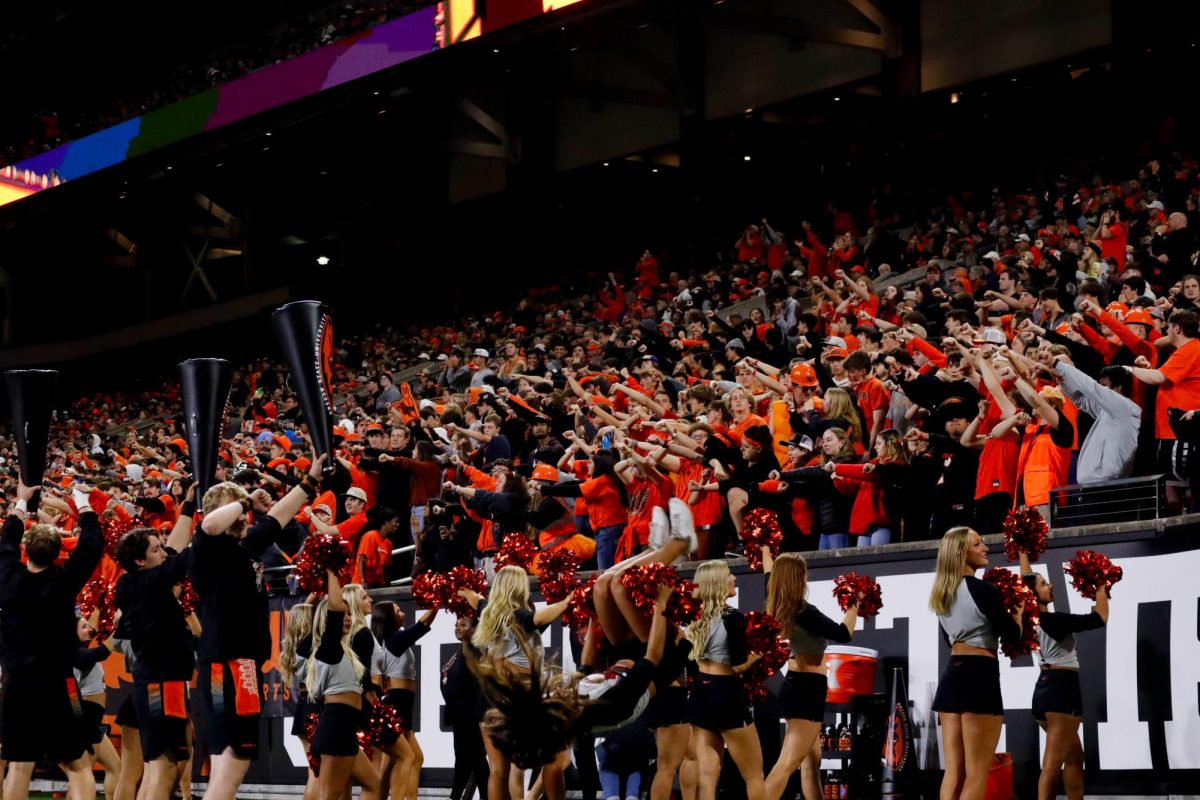2030 sustainable transportation strategy combats commuter grievances at OSU
Photo illustration of a car, stop sign and OSU parking tickets falling.
November 28, 2022
The announcement of the Jen-Hsun and Lori Huang Collaborative Innovation Complex comes with many implications for Oregon State University commuters.
With the lot between the Lonnie B. Harris Black Cultural Center and the Plageman Student Health Center set to be taken over by the new building, parking spots will become increasingly sparse on campus.
Some drivers were not happy about the announcement. Barometer news contributor Leah Kahn recently published a column, “Opinion: Parking on campus drives you crazy,” arguing that OSU needs to provide more parking spaces for the ones lost to new construction over the past years.
However, other students disagree that the university should invest in new parking structures, instead seeing the removal of the lot as a way to phase out cars on campus and move towards more sustainable forms of transportation.
In response to Kahn’s article, microbiology student and biker Erik Jacobsen commented that OSU needs to step up as “the leading voices in sustainability and reducing climate impact” and embrace more eco-friendly forms of commuting like biking and walking.
“If parking and inflationary fuel prices have you stressed, nothing reduces that more effectively than exercise,” Jacobsen said. “So pull on your waterproof pants, or just embrace a little nature, I guarantee you can afford it.”
Computer science student and founder of OSU’s new Bicyclist Advocacy organization Jaron Rosenau hopes that more students do just that. Rosenau, a Wisconsin native used to biking in the snow, encourages students to tough it out as the weather becomes colder and wetter.
“Biking in Oregon where it is 40 (degrees) and raining means a biker needs to put on a rain jacket and pull up their rain pants, install fenders and drop the excuses,” he said. “By starting a
Bicycle Advocacy student organization, we can set the example of how pulling up our rain pants is not difficult.”
For those who do live relatively far away from campus, Rosenau maintains that they should make an effort to bike.
“The complaint I hear the most from motor vehicle drivers is that they live too far away,” Rosenau said. “My suggestion for them would be to try and bike it anyway. Take their bicycle to their local bus, take the bus into Corvallis or OSU, then bike the rest of the way to class.”
However, this way of commuting is inconvenient for many students living outside of Corvallis like Aisling Carnahan, an accounting student living in Eugene.
Carnahan’s commute to school takes 50 minutes, one that would be significantly longer if she did not drive. There is a train near her apartment that runs to Albany that she has taken in the past, but has proven to be quite inconvenient.
“I’d have to get on it at like 5:30 a.m. to be able to make it to an 8 a.m. class,” Carnahan said. It’s pretty rough. And then the next train leaves at like 4:30 p.m. So if there were more trains, that’d be cool.”
Carnahan added that she’d like to see the Beaver Bus expand its routes in the future and that she’d take the bus if it came somewhere closer to her like Junction City.
Despite the issues faced by both drivers and non-drivers on campus, there is strong drive among students to improve these conditions. Jacobsen is hopeful that OSU will implement changes to help long-distance commuters like Caranahan do so more sustainably.
“There were things on the books about setting up a commuter or a carpool kind of network, like places where you can find people coming from similar areas and carpool together. Also state funding to increase (Corvallis Transit System) buses and public transit options for those places that are more distant,” Jacobsen said.
The plan Jacobsen refers to is OSU’s 2030 Sustainable Transportation Strategy, created in 2019. According to OSU Director of Transportation Services Meredith Williams, the university’s plan attempts to accommodate all types of commuters while promoting greener transportation.
“OSU has a goal to reduce our drive-alone rate on campus… by a third by the year 2030 and we want to do that while maintaining access for students and employees,” Williams said. “We recognize that not everyone lives in Corvallis and not everybody has access to the same transportation options, so we are actively developing options for all of the communities that access OSU.”
There are currently multiple initiatives underway to help achieve the 2030 goal both within the OSU campus and the greater Corvallis area.
Expanding bike access is a large focus for the city and university. Washington Way will soon undergo a two year reconstruction project spanning from 15th Street to 35th Street to provide better lighting and a separated cycle track meant just for bikers. Corvallis plans on adding bikeways on 11th street, part of the city’s plan to create a low-stress bike network.
There is also progress in providing more parking spots for bikers on campus.
“We have been working with other OSU departments to explore locations for secure bike parking facilities,” Williams said. “We’ve identified three locations that could be a good fit, and there are probably others.”
The 2030 Sustainable Transportation Strategy also emphasizes the importance of public transit and actions have already been taken to make it a more viable option for students who live further away.
Both the Beaver Bus and Corvallis Transit System buses are free for anyone to ride and don’t require ID. For students in Albany, there is a specific route that just increased its daily stops.
“There is the Linn-Benton Loop which recently increased its service frequency,” Williams said. “Specifically, there’s a very direct route called the Campus Connecter that runs directly between Linn-Benton Community College and OSU.”
For students living in Eugene or other cities that are outside of areas serviced by the Beaver Bus of CTS, carpooling is another option to avoid driving alone.
According to Williams, the university is working with a third party to create an app in order to facilitate the process.
Though the 2030 plan aims to significantly lower the drive-alone rate, Williams acknowledges that completely eliminating it is an impossibility for some. The price of daily parking has been cut in half to accommodate students that may not always be able to access a more sustainable form of transportation on certain days.
If students have any transportation-related concerns, Williams encourages students to reach out.
“If anyone wants to know about the transportation options available where they live, they can contact our department at [email protected] and we’d be happy to set up a time to tailor a conversation with them,” Williams said.

